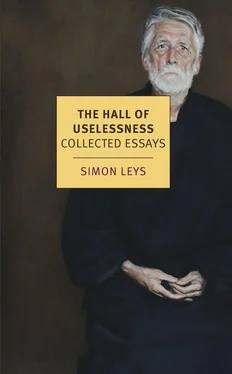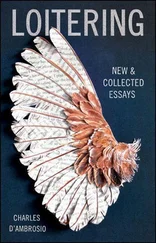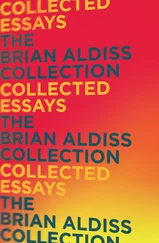Before securing power, the party thrives on political chaos. If confronted with a deliquescent government, it can succeed through organisation and propaganda, even when it operates from a minuscule base. In 1945, the communists controlled only one town, Yan’an, and some remote tracts of countryside; four years later, the whole of China was theirs. At the time of the communist takeover, the party members in Peking numbered a mere 3,000, and Shanghai, a city of 9 million people, had only 8,000 party members. In a time of social and economic collapse, it takes very few people — less than 0.01 per cent of the population in the Chinese case — to launch emotional appeals, to stir the indignation of the populace against corrupt and brutal authorities, to mobilise the generosity and idealism of the young, to enlist the support of thousands of students, and eventually to present their tiny communist movement as the incarnation of the entire nation’s will.
What is even more remarkable is that, before 1949, wherever the population had been directly exposed to their rule the communists were utterly unpopular. They had introduced radical land reform in parts of North China during the civil war, and, as Ladany recalls:
Not only landowners but all suspected enemies were treated brutally; one could walk about in the North Chinese plains and see hands sticking out from the ground, the hands of people buried alive… Luckily for the communists, government propaganda was so poorly organised that people living in regions not occupied by the communists knew nothing of such atrocities.
Once the whole country fell under their control, it did not take long for the communists to extend to the rest of the nation the sort of treatment which, until then, had been reserved for inner use — purging the party and disciplining the population of the so-called liberated areas. Systematic terror was applied on a national scale as early as 1950, to match first the land reform and then the campaign to suppress “counter-revolutionaries.” By the fall of 1951, 80 per cent of all Chinese had had to take part in mass accusation meetings, or to watch organised lynchings and public executions. These grim liturgies followed set patterns that once more were reminiscent of gangland practices: during these proceedings, rhetorical questions were addressed to the crowd, which, in turn, had to roar its approval in unison — the purpose of the exercise being to ensure collective participation in the murder of innocent victims; the latter were selected not on the basis of what they had done, but of who they were, or sometimes for no better reason than the need to meet the quota of capital executions which had been arbitrarily set beforehand by the party authorities.
From that time on, every two or three years, a new “campaign” would be launched, with its usual accompaniment of mass accusations, “struggle meetings,” self-accusations and public executions. At the beginning of each “campaign” there were waves of suicides: many of the people who during a previous “campaign” had suffered public humiliation, psychological and physical torture at the hands of their own relatives, colleagues and neighbours found it easier to jump from a window or under a train than to face a repeat of the same ordeal.
What is puzzling is that in organising these recurrent waves of terror the communists betrayed a strange incapacity to understand their own people. As history has amply demonstrated, the Chinese possess extraordinary patience; they can stoically endure the rule of a ruthless and rapacious government provided that it does not interfere too much with their family affairs and private pursuits, and as long as it can provide basic stability. On both accounts, the communists broke this tacit covenant between ruler and ruled. They invaded the lives of the people in a way that was far more radical and devastating than in the Soviet Union. Remoulding the minds, “brainwashing” as it is usually called, is a chief instrument of Chinese communism, and the technique goes as far back as the early consolidation of Mao’s rule in Yan’an.
To appreciate the characteristics of the Maoist approach one need simply to compare the Chinese “labour rectification” camps with the Soviet Gulag. Life in the concentration camps in Siberia was physically more terrifying than life in many Chinese camps, but the mental pressure was less severe on the Soviet side. In the Siberian camps the inmates could still, in a way, feel spiritually free and retain some sort of inner life, whereas the daily control of words and thoughts, the actual transformation and conditioning of individual consciousness, made the Maoist camps much more inhuman.
Besides its cruelty, the Maoist practice of launching political “campaigns” in relentless succession generated permanent instability, which eventually ruined the moral credit of the party, destroyed much of society, paralysed the economy, provoked large-scale famines, and nearly developed into civil war. In 1949, most of the population had been merely hoping for a modicum of order and peace, which the communists could easily have granted. Had they governed with some moderation and abstained from the needless upheavals of the campaigns, they could have won long-lasting popular support and ensured steady economic development — but Mao had a groundless fear of inner opposition and revolt; this psychological flaw led him to adopt methods that proved fatally self-destructive.
History might have been very different if the original leaders of the Chinese Communist Party had not been decimated by Chiang Kai-shek’s White Terror of 1927, or expelled by their own comrades in subsequent party purges. They were civilised and sophisticated urban intellectuals, upholding humanistic values, with cosmopolitan and open minds, attuned to the modern world. While their sun was still high in the political firmament, Mao’s star never had a chance to shine; however bright and ambitious, the young self-taught peasant was unable to compete with these charismatic figures. Their sudden elimination marked an abrupt turn in the Chinese revolution — one may say that it actually put an end to it — but it also presented Mao with an unexpected opening. At first, his ascent was not exactly smooth; yet, by 1940 in Yan’an, he was finally able to neutralise all his rivals and to remould the entire party according to his own conception. It is this Maoist brigade of country bumpkins and uneducated soldiers, trained and drilled in a remote corner of one of China’s poorest and most backward provinces, that was finally to impose its rule over the entire nation — and, as Ladany adds, “This is why there are spittoons everywhere in the People’s Republic.”
Mao’s anti-intellectualism was deeply rooted in his personal experiences. He never forgot how, as a young man, intellectuals had made him feel insignificant and inadequate. Later on, he came to despise them for their perpetual doubts and waverings; the competence and expertise of scholarly authorities irritated him; he distrusted the independence of their judgements and resented their critical ability. In the barracks-like atmosphere of Yan’an, a small town without culture, far removed from intellectual centres, with no easy access to books, amid illiterate peasants and brutish soldiers, intellectuals were easily singled out for humiliating sessions of self-criticism and were turned into exemplary targets during the terrifying purges of 1942–44. Thus the pattern was set for what was to remain the most characteristic feature of Chinese communism: the persecution and ostracism of intellectuals. The Yan’an brigade had an innate dislike of people who thought too much; this moronic tradition received a powerful boost in 1957, when, in the aftermath of the Hundred Flowers campaign, China’s cultural elite was pilloried; nine years later, finally, the “Cultural Revolution” marked the climax of Mao’s war against intelligence: savage blows were dealt to all intellectuals inside and outside the party; all education was virtually suspended for ten years, producing an entire generation of illiterates.
Читать дальше












